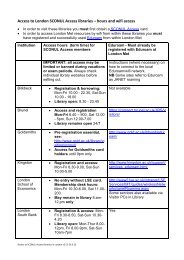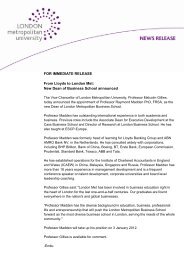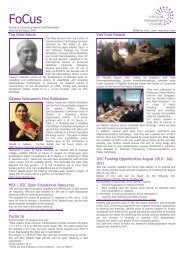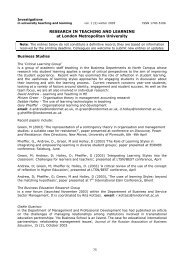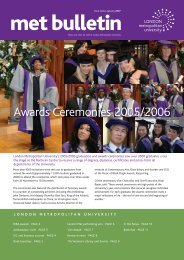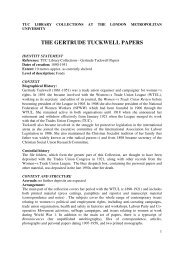Developing practice-based research with persona dolls for
Developing practice-based research with persona dolls for
Developing practice-based research with persona dolls for
You also want an ePaper? Increase the reach of your titles
YUMPU automatically turns print PDFs into web optimized ePapers that Google loves.
<strong>Developing</strong> Practice-Based Research 11<br />
how to map out stories reflecting real life situations that children<br />
face in social contexts such as the classroom. Her five-step method<br />
<strong>for</strong> a storytelling session begins <strong>with</strong> a short introduction of the<br />
<strong>dolls</strong>, followed by an outline of a the situation that will be the<br />
starting point <strong>for</strong> a discussion on the <strong>dolls</strong>’ feelings. In this discussion<br />
there are spaces <strong>for</strong> problem solving, <strong>for</strong> changing perspectives and<br />
<strong>for</strong> exercises in empathy. The end of the session is resolution: she<br />
gives the story an ending that incorporates the ideas the children<br />
have offered.<br />
The preparation and the stages of the application.<br />
In this case study Duygu, a Turkish teacher, was briefed about the use<br />
of the <strong>dolls</strong> by a supervisor through workshops, books and articles.<br />
Several <strong>dolls</strong> were used in class, and she developed a story <strong>with</strong> a<br />
female doll situated in the Turkish context. This story was <strong>based</strong> on a<br />
time when a child from the Czech Republic spent several months in a<br />
Turkish school (Children’s House), but eventually returned <strong>with</strong> her<br />
family to the Czech Republic. The <strong>dolls</strong> were used <strong>with</strong> the a group<br />
of children in the school to find out if they could develop a story<br />
<strong>with</strong> a male Persona Doll that linked <strong>with</strong> the story of the Czech girl.<br />
(see Appendix 2)<br />
As well as employing the theoretical base, Duygu needed to use<br />
various practical skills and to develop the story <strong>with</strong> the trainer.<br />
A group was selected in consultation <strong>with</strong> staff, of some children<br />
<strong>with</strong> Turkish roots and others <strong>with</strong> mixed family origins, all of whom<br />
had some experience of parents in academic surroundings. These<br />
children also had some <strong>persona</strong>l experiences of <strong>for</strong>eign children, and<br />
of guest teachers bringing new creative inputs into the class. We<br />
wanted to use the Dolls to investigate their memories and views of<br />
<strong>for</strong>eign children living in situations of some sorrow.<br />
Duygu worked <strong>with</strong> two groups, from two different classrooms. The<br />
first was a trial group, and the comments of the children, and the<br />
reflections of the teachers and the trainer were used to adapt the<br />
story and the experiment <strong>with</strong> the second group. As a result, the<br />
second session was more relaxed. After the telling the story of Peter,<br />
the children were invited into the second room to draw a picture <strong>for</strong><br />
Peter. After watching this, the teacher talked <strong>with</strong> the children in<br />
room they were working in, <strong>based</strong> on their drawings. She recorded<br />
their comments.<br />
Dugyu introduced the second part of the story five weeks after the<br />
Persona Doll Peter had first been introduced (see Appendix 2). During<br />
this time, a child <strong>with</strong> blond hair and blue eyes was noticed in the<br />
school surrounding. The children in the activity enthusiastic<br />
identified this boy <strong>with</strong> the figure of Peter. The teacher saw in this a<br />
sign that Peter was still in many of the children’s minds.




